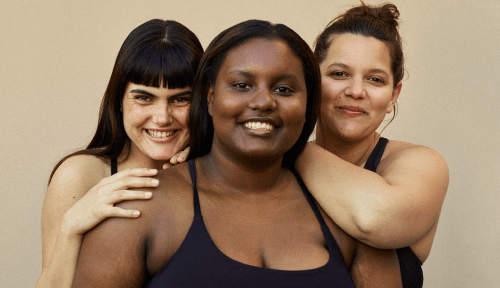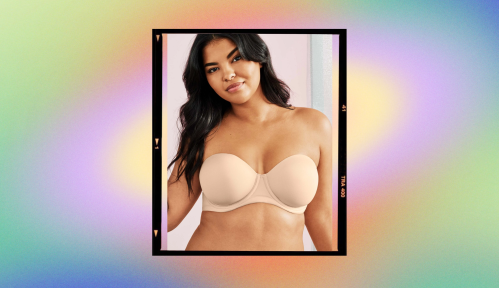With a whopping 662.7 million views and counting, #capsulewardrobe is among the most popular fashion TikTok trends—and it’s not hard to see why. A method that promises to streamline your closet with a set number of pieces and eliminate the dreaded what-should-I-wear outfit roulette? Who wouldn’t want that?
Since its introduction in the 1970s by London boutique owner Susie Faux, the capsule wardrobe—a collection of trend-proof pieces that can be mixed and matched to create endless outfits—has carved out a niche in the fashion community. Gaining popularity in the 1980s with Donna Karan’s Seven Easy Pieces collection, the concept had a resurgence in the 2010s as early fashion bloggers took on a distinct uniform of neutral pieces. Still, the capsule wardrobe remained relatively in the fashion background until 2020, when so many people were focusing on the essentials, seeking simplicity, and re-evaluating their lives—and suddenly, the idea of a capsule wardrobe was more attractive than ever. Many of us have been filling our closets with beige blazers and white tees ever since.
When I heard about the capsule wardrobe, I was sold. Sign me up, I thought as I read the articles, followed the bloggers, and bought all the things I was told I needed to create a capsule wardrobe of my own. I created a separate little space in my closet just for my capsule wardrobe so as to not be distracted by the rest of my clothing. I even started to document my journey on my blog. I was fully invested.
For a few weeks, things were going well. I was less overwhelmed when looking in my closet, and I felt I found my style stride. That is, until I tried to style that little black dress, the one all the capsule wardrobe experts say you needed. I will spare you the details, but it wasn’t working, no matter how hard I tried. So I fell back into the “What should I wear?” spiral I’d been trying to escape. I was so confused! I followed the steps, I purchased all the things, and right before my eyes, the “perfect” capsule wardrobe was failing me. I had streamlined my closet to make it work better, and in an instant, it made things worse.
All of that shopping, and for what? In our consumerist society, the capsule wardrobe concept isn’t about just winnowing down your clothing; it’s about buying even more, “better” items. And it’s not about having a single capsule wardrobe, but about having many of them. Three years into the capsule wardrobe’s big comeback, the idea has extended beyond the original concept of a collection of clothes you wear all year round. There are now workwear, seasonal, and vacation capsules—not to mention the rise of brands such as ADAY, Cuyana, and Quince, whose entire ethos is the capsule wardrobe. Even fast fashion brands are getting in on the trend: H&M encourages shoppers to “be more discerning about the clothes we purchase” in a guide to building a workwear capsule wardrobe.
I had streamlined my closet to make it work better, and in an instant, it made things worse.
But brands are merely responding to consumer interest in capsules. Fashion publications show readers how to adopt a capsule wardrobe, adding their affiliate links throughout their articles for readers to shop. If you see something that you really want to buy, that’s great, but the idea of a capsule is to eliminate the need to constantly buy. To me, it’s counterintuitive to preach “less but better” while promoting buying in the same breath. It’s also not lost on me that the featured pieces—a $250 bodysuit, a $1,300 black dress as in this Vogue article—are often too expensive for the average person. These splurges are often spun as “investment pieces,” making you think you need to spend that kind of money and that somehow, spending beyond your means is a wise decision.
And as for that distinct uniform that bloggers and influencers popularized? It’s a minimalist starter pack all in neutrals: white button-downs, black trousers, beige trench coats, and that little black dress. Since the capsule has been defined that way for years, many people believe they need those exact things in order to have their own capsule wardrobe—and so they add those items to cart. But that style might not work for everyone; it didn’t for me or for TikTok user @thevictorialau, whose video about her own capsule wardrobe fail inspired my own TikTok. People tell you that the point of a capsule is to have a curated number of clothes that can mix and match with each other for endless looks, but what they don’t tell you is that it should be tailored to you. It should fit your lifestyle, the colors you like, and (most importantly) the pieces you like to wear.
It’s common to find fashion creators selling the benefits of a capsule along with pieces their followers “need,” especially because doing so can result in large commission checks. Yet far fewer extol the benefits of making do with what’s already in one’s closet. “Influencers in this space have a duty to always encourage people to shop mindfully and their own closets first, as this is the true spirit of capsules and minimalism,” says Christina Mychas, a fashion influencer who promotes the concept of minimalism. “When influencers start disguising full-on clothing hauls as a capsule wardrobe, that’s when it feels a little more icky to me—like capitalizing on the trend to use the hashtag versus actually participating in the lifestyle.”
With all of this capsule wardrobe madness, it’s easy to get sucked in and find yourself lost, along with your money. But it doesn’t have to be that way. We all have a built-in capsule that exists within our wardrobe: It’s those pieces we constantly gravitate to. If you want to create your own capsule, use those treasured pieces as a guide, buying only when you’re looking to replace or fill in a hole you find. Your capsule should be a reflection of your personal style, so it can look however you want and should take you time to build. If you feel any pressure, it may not be the right time to create one. Personally, I’ve awakened from my capsule wardrobe slumber and have an edit of clothing that suits me. And it doesn’t include a little black dress.
Sign up for the Well+Good SHOP Newsletter
Get exclusive deals on wellness, beauty, fitness, and food products that have been hand-picked by our editors.
Got it, you've been added to our email list.











